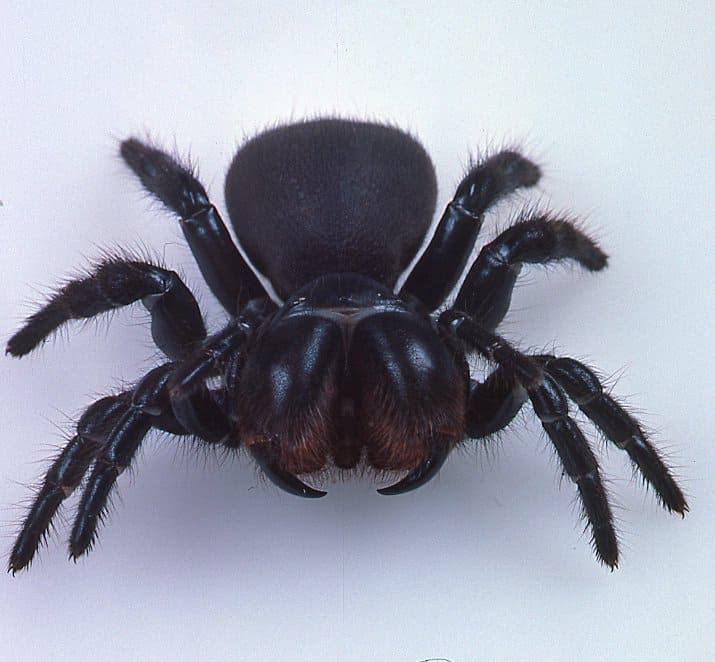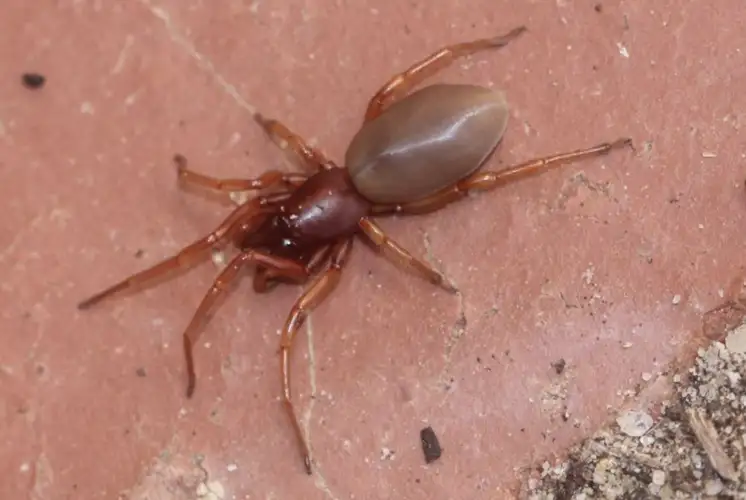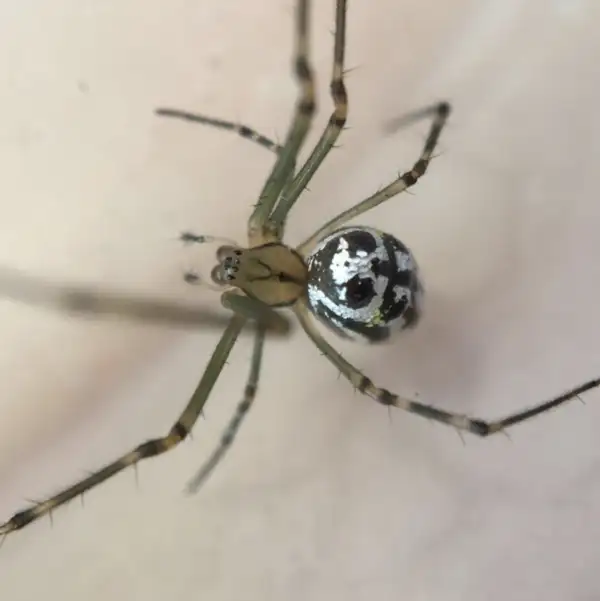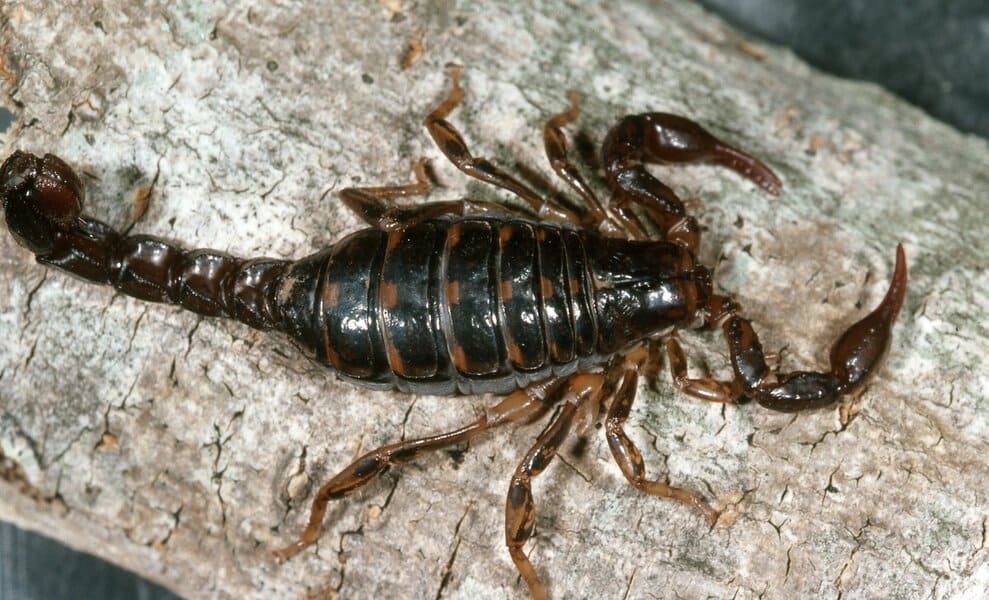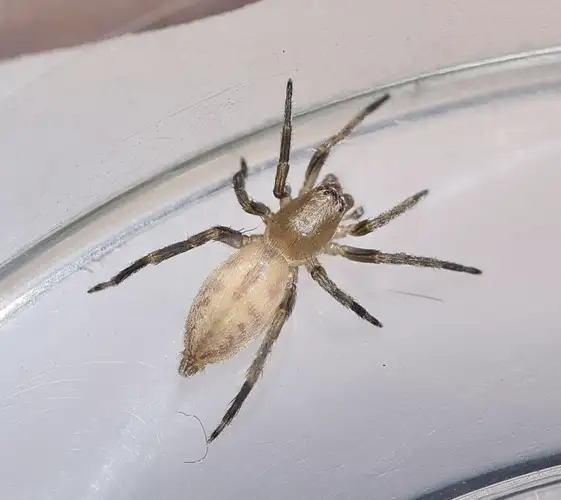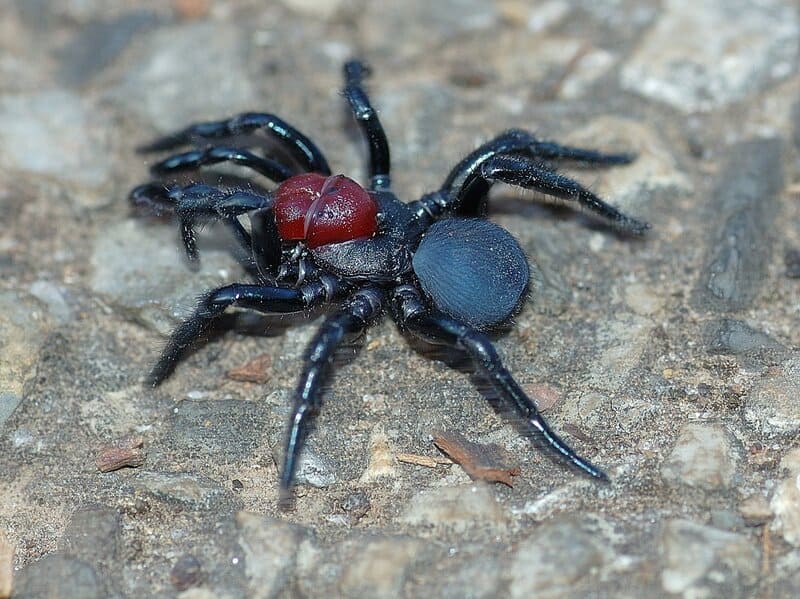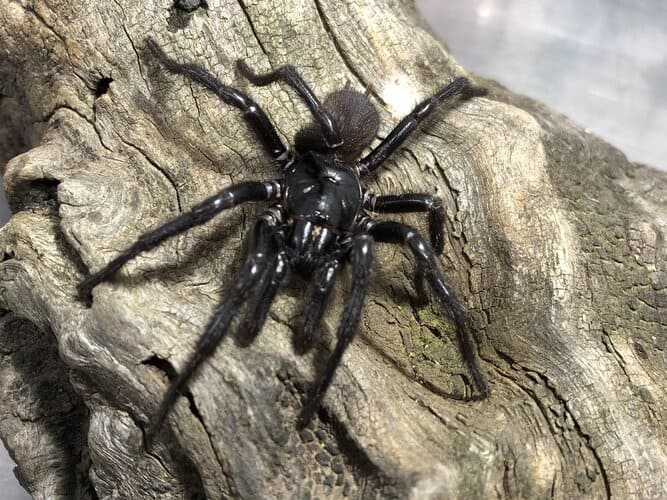Mouse Spiders
IUCN
Not evaluatedBasic Information
Scientific classification
- name:Mouse Spiders
- Scientific Name:Missulena (e.g. Missulena bradleyi)
- Outline:Arthropoda
- Family:Missulena 鼠蛛属
Vital signs
- length:Body length usually about 10–35 mm, females stockier than males
- Weight:From several hundred milligrams to a few grams depending on species and individual
- lifetime:Females may live several years (up to 8–10+ years); males live shorter lives
Feature
Burrow-dwelling mygalomorph spiders with potentially potent venom; some species medically significant in Australia.
Distribution and Habitat
Silk-lined burrows in soil across a range of habitats in mainland Australia and nearby regions, including lawns, woodland and scrub.
Appearance
Robust body with high, glossy cephalothorax and strong fangs; females dark brown to black, some males with bright blue or red markings.
Details
Mouse spiders are mygalomorph spiders of the genus Missulena, found mainly in Australia and nearby regions. They are robust, burrow-dwelling spiders with a high, glossy cephalothorax and strong fangs, somewhat resembling small tarantulas. Several species are regarded as medically important because their venom can be similar in action to that of the Australian funnel-web spiders.
Basic Biology
Scientific scope: Genus Missulena – mouse spiders (e.g. the Eastern Mouse Spider M. bradleyi)
Size: Body length generally about 10–35 mm, with females stockier than males.
Longevity: Females may live for several years in their burrows, with estimates of 8–10+ years in some cases; males usually live for a shorter time.
Appearance
Mouse spiders have a bulky body, high cephalothorax and powerful chelicerae. Colour varies by species: many females are uniformly dark brown to black, whereas males may show bright patches of blue or red, such as a blue carapace or red markings on the front of the cephalothorax or abdomen. As mygalomorphs, their fangs strike downwards in a parallel motion, similar to tarantulas.
Distribution & Habitat
Most mouse spiders are endemic to mainland Australia, with some species also known from nearby regions such as New Guinea. They typically construct silk-lined burrows in the ground, sometimes with a simple or partially hinged trapdoor or a securely webbed entrance. Burrows may occur in lawns, open woodland, scrub, farmland and around gardens and roadsides.
Behaviour & Diet
Mouse spiders are primarily nocturnal ambush predators. By day they remain in the burrow, emerging to the entrance at night to seize insects and other arthropods—and occasionally small vertebrates—that pass within range. Prey is captured with a rapid lunge and subdued by a venomous bite.
Venom & Medical Significance
The venom of some mouse spider species is known to contain potent neurotoxic components and in laboratory tests can showsimilar activity to funnel-web spider venom. Documented human bites have produced a range of effects from local pain and mild systemic symptoms through to more serious neurotoxic signs in a minority of cases.
In Australia, mouse spiders are therefore treated as potentially medically significant. Modern clinical practice often uses funnel-web spider antivenom where indicated, and serious outcomes are rare when prompt medical care is available. Anyone suspected of being bitten by a mouse spider in Australia should seek urgent medical assessment.
Human Encounters & Precautions
Burrows may be located in gardens, beside paths or under objects such as stones and timber. Males wander during the mating season and are more likely to be encountered on the surface or near houses. Sensible precautions include wearing gloves when gardening, avoiding bare hands under rocks or logs, and not handling large dark spiders found in mouse spider habitat.
FAQ
Q1. How dangerous are mouse spiders?
Some species have venom capable of causing serious neurotoxic symptoms, although many reported bites have been mild.
Because of this potential, suspected bites should always be treated seriously and assessed by medical professionals.
Q2. How can I tell a mouse spider from other large spiders?
Mouse spiders have a high, shiny cephalothorax, sturdy body and downward-striking fangs. Males of some species show bright blue or red
markings that are not typical of most house or garden spiders.
Q3. What should I do if I think I have been bitten?
Remain calm, restrict movement of the affected limb if possible and seek urgent medical help, especially in Australia where antivenom
and specific treatment protocols are available.
Q4. Why are they called “mouse” spiders?
The name may relate to their stocky build and burrowing habits, which can be reminiscent of small mammals, although the exact origin
of the common name is uncertain.

